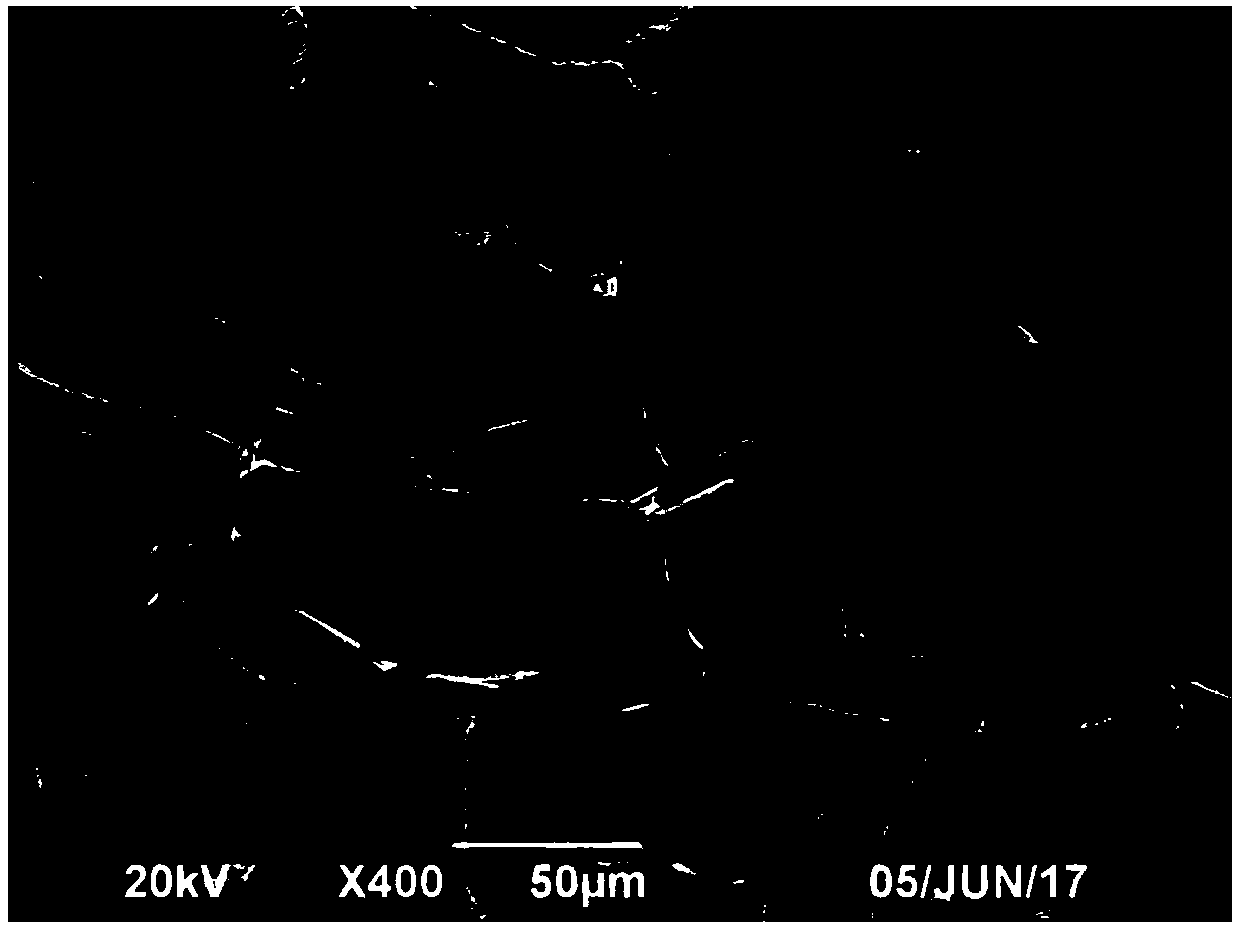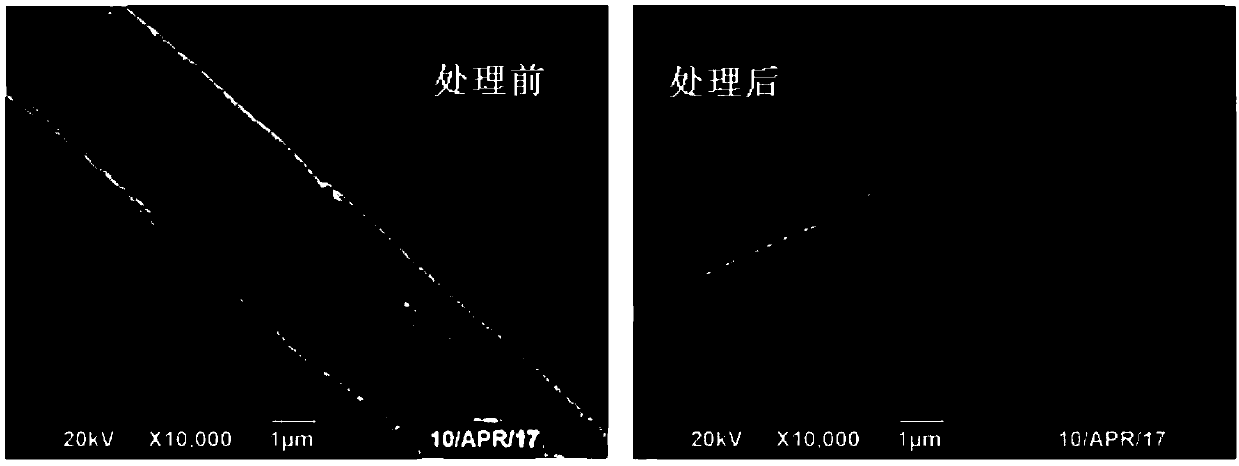High-hydrophobicity silicon carbide foam ceramic as well as preparation method and application thereof
A technology for hydrophobic silicon carbide and foam ceramics, which is applied in ceramic products, chemical instruments and methods, applications, etc., can solve the problems of affecting the wave transmission performance, affecting the density of ceramics, material surface pollution, etc. Lower surface energy and good thermal stability
- Summary
- Abstract
- Description
- Claims
- Application Information
AI Technical Summary
Problems solved by technology
Method used
Image
Examples
Embodiment 1
[0047] (1) Weigh silicon carbide micropowder, hyperbranched liquid polycarbosilane and n-hexane according to the mass fraction of 20wt%, 20wt%, and 60wt%, the average particle size of the silicon carbide micropowder is 3 μm, mix the raw materials evenly, and ultrasonically oscillate for 10 minutes After obtaining the ceramic slurry, cut the melamine foam plastic into a size of 2*2*1cm and immerse it in the slurry, squeeze it repeatedly to remove the air, take it out after uniform impregnation, and squeeze out the excess slurry by rolling to obtain a foam prefabricated body ;
[0048] (2) Air-dry the preform at room temperature for 48 hours to slowly volatilize the solvent to prevent foam deformation, and then place it in an oven at 250°C to cure and cross-link in an air atmosphere for 40 minutes;
[0049] (3) Place the cured foam preform in a tube furnace, feed nitrogen gas for gas protection, and adopt a segmented heating mode to ceramicize the cured foam preform. The first s...
Embodiment 2
[0053] (1) Weigh silicon carbide micropowder, hyperbranched liquid polycarbosilane and n-hexane according to the mass fraction of 12wt%, 28wt%, and 60wt%. The average particle size of the silicon carbide micropowder is 3 μm, and the raw materials are uniformly mixed and ultrasonically oscillated for 10 minutes After obtaining the ceramic slurry, cut the melamine foam plastic into a size of 2*2*1cm and immerse it in the slurry, squeeze it repeatedly to remove the air, take it out after uniform impregnation, and squeeze out the excess slurry by rolling to obtain a foam prefabricated body ;
[0054] (2) Air-dry the preform at room temperature for 24 hours to slowly volatilize the solvent to prevent foam deformation, and then place it in an oven at 220°C to cure and cross-link in the air atmosphere, and the curing time is 60 minutes;
[0055] (3) Place the cured foam preform in a tube furnace, feed nitrogen gas for gas protection, and adopt a segmented heating mode to ceramicize t...
Embodiment 3
[0059] (1) Weigh silicon carbide micropowder, hyperbranched liquid polycarbosilane, and n-hexane according to the mass fraction of 28wt%, 12wt%, and 60wt%. The average particle size of the silicon carbide micropowder is 3 μm. Mix the raw materials uniformly and ultrasonically shake for 10 minutes After obtaining the ceramic slurry, cut the melamine foam plastic into a size of 2*2*1cm and immerse it in the slurry, squeeze it repeatedly to remove the air, take it out after uniform impregnation, and squeeze out the excess slurry by rolling to obtain a foam prefabricated body ;
[0060] (2) Air-dry the preform at room temperature for 36 hours to slowly volatilize the solvent to prevent foam deformation, and then place it in an oven at 180°C to cure and cross-link in an air atmosphere for 90 minutes;
[0061] (3) Place the cured foam preform in a tube furnace, feed nitrogen gas for gas protection, and adopt a segmented heating mode to ceramicize the cured foam preform. The first st...
PUM
| Property | Measurement | Unit |
|---|---|---|
| Density | aaaaa | aaaaa |
| Compressive strength | aaaaa | aaaaa |
| Pore size | aaaaa | aaaaa |
Abstract
Description
Claims
Application Information
 Login to View More
Login to View More - R&D
- Intellectual Property
- Life Sciences
- Materials
- Tech Scout
- Unparalleled Data Quality
- Higher Quality Content
- 60% Fewer Hallucinations
Browse by: Latest US Patents, China's latest patents, Technical Efficacy Thesaurus, Application Domain, Technology Topic, Popular Technical Reports.
© 2025 PatSnap. All rights reserved.Legal|Privacy policy|Modern Slavery Act Transparency Statement|Sitemap|About US| Contact US: help@patsnap.com



